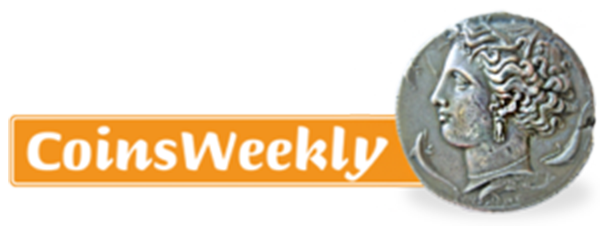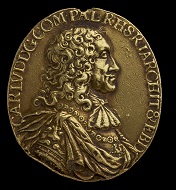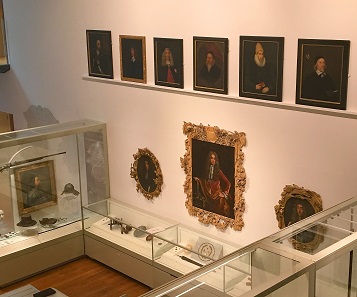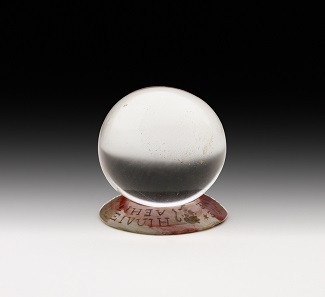October 26, 2017 – Elias Ashmole was a leading intellectual of his day who studied at Oxford and was elected a founding Fellow of the Royal Society in London in 1661. A true Enlightenment polymath, he was interested in everything from natural history, medicine and mathematics, to alchemy, astrology and magic – all popular disciplines in the seventeenth-century.
Medal awarded to Elias Ashmole, 1671. © Ashmolean Museum, University of Oxford.
In founding a new public museum Ashmole’s vision was to create a centre for practical research and the advancement of knowledge of the natural world which, in his own words, ‘is very necessary to humaine Life, health, & the conveniences thereof.’ He recommended that the Keeper (head) of the museum should be Oxford’s Professor of Chemistry and the first incumbent was Dr Robert Plot, a noted scientist and naturalist.
View inside the ‘Ashmolean Story Gallery’. © Ashmolean Museum, University of Oxford.
Evoking the style and atmosphere of the original museum, the new gallery displays objects related to scientific enquiry and the quest for knowledge that would have captivated visitors in 1680s Oxford.
Crystal ball. Spherical ball of worked and polished quartz. 17th century, diameter 3.85 cm. © Ashmolean Museum, University of Oxford.
These include a crystal ball probably used by Ashmole for ‘crystal-gazing’ and making predictions; medical equipment and samples like kidney stones, apothecary jars and powders; and an array of natural history specimens of exotic animals, fish and birds. One such specimen that clearly confused Plot was a ‘Gigantic thigh-bone’. He recognized that it was a real bone but could not identify the species due to its enormous size and concluded that it must have been the remains of a giant man or woman. Now known to be part of a femur of a large meat-eating dinosaur, Plot’s illustration was nonetheless the first publication of a dinosaur bone. Plot’s tenure at the Ashmolean came to end in 1689/90 when he resigned both his university posts citing an insufficient salary.
Attributed to Emanuel de Critz (1608-1665), Portrait of John Tradescant the Elder. Oil on canvas, 79 x 62 cm. © Ashmolean Museum, University of Oxford.
Ashmole’s gift to the University included his own extensive collection of books, manuscripts, coins, medals and other antiquities. It also included the celebrated Tradescant family collection of ‘Rarities’ that had been gifted to Ashmole by John Tradescant the younger. In 1683 Ashmole transferred everything to Oxford from London, sending it by barge in twenty six large chests. Ashmole specified that the new museum should be housed in a building designed to promote scientific practice. In the original Ashmolean in Broad Street, Oxford, there was a repository for the collections on the first floor; a lecture theatre for natural history on the ground floor; and in the basement was a state-of-the-art chemical laboratory and anatomy room. He also provided statutes of governance to guide the museum in achieving its aims, and this original handwritten document is on display in the new gallery. The eighteen statutes include the establishment of a board of governors, an annual inspection and audit, and the cataloguing of all objects that came into the collection. They also established procedures for the care and security of objects, the admission of visitors and museum finances – a model for modern museums and galleries the world over.
Guy Fawkes’ Lantern. London, England, c. 1605. Iron and horn, height 34.5 cm. © Ashmolean Museum, University of Oxford.
While the collections have grown and shifted focus to art and archaeology, the purpose of the Ashmolean is little changed today. The museum’s main aim remains the preservation and display of the collections for enjoyment and the advancement of knowledge. The development of the new gallery has allowed the redisplay of important pieces such as Guy Fawkes’ lantern – a favourite of museum visitors. It has also created space to bring out of storage works such as Ashmole’s portrait collection of scholars and scientists which includes the famous painting of Elizabethan astrologer and mathematician, John Dee.
Powhatan’s Mantle. From southern Chesapeake Bay region, Virginia, United States of America, c. 1600-38. Leather, shell and sinew, 235 x 160 cm. © Ashmolean Museum, University of Oxford.
The gallery development has also provided staff the opportunity to research and conserve objects from the founding collection. One of the most significant pieces that has been redisplayed is Powhatan’s Mantle. Made of four white-tailed deer hides sewn together and decorated with shells, this huge and fragile object is traditionally linked to Powhatan, the father of Pocahontas and chief of the Indigenous North American Powhatan people who lived in Virginia, the area settled by the English in the 1600s.
Factum Arte staff photographing Powhatan’s Mantle, 2017. © Ashmolean Museum, University of Oxford.
The museum’s conservation team has investigated the mantle with the help of the Factum Arte Foundation using specialized photography and imaging. Archival research into the mantle indicates that it was probably displayed vertically on the wall from the seventeenth century. The loss of shells around the lower border suggests that people were able to touch it and may have taken shells as souvenirs of their visit.
Today, the mantle has proved equally popular. The Ashmolean’s 2017 annual appeal has asked members of the public to support a new high-tech display case for the iconic object. Donors to the appeal have been offered the chance to have their name or a dedication inscribed on the case and more than 200 people have made donations totalling nearly £52,000.
More information is available on the website of the Ashmolean Museum.
This is the website of the Factum Arte Foundation.
Further details about the life and the work of Elias Ashmole can be found on the Royal Berkshire History website.
And here is the link to the fabulous coin collection of the Ashmolean.
Which we visited of course. Here is the article.











